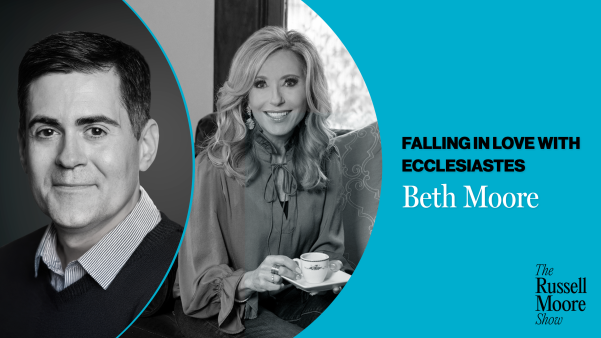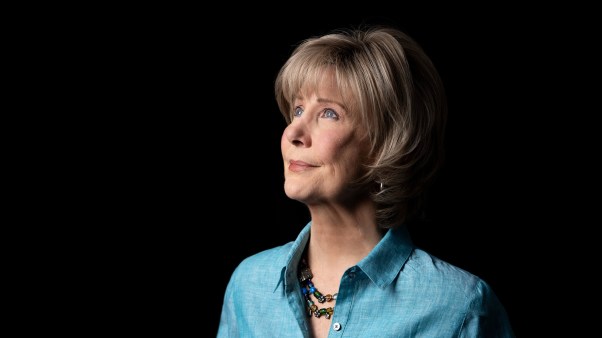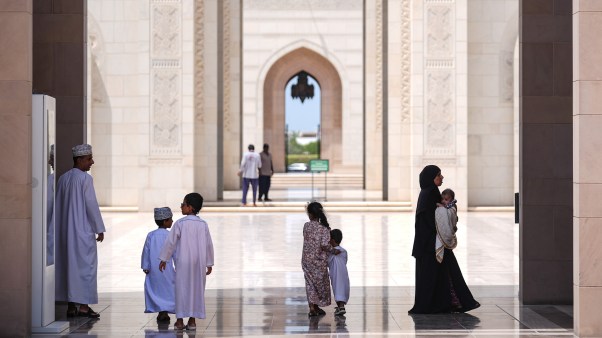Asking the Wrong Questions
By Elesha Coffman, assistant editor of CHRISTIAN HISTORY
When people come face to face with fragments of an ancient culture, they automatically ask questions. When those fragments relate to Jesus and early Christianity, it seems just as automatic that the wrong questions get the most attention.
On Wednesday the Christian History staff visited the Field Museum’s exhibit of Dead Sea Scrolls. The first of the scrolls was discovered in 1947 in a cave near Qumran (about 15 miles from Jerusalem) when a herder went looking for a lost goat. The site’s 11 caves eventually yielded a wealth of papyrus and parchment scrolls, adding up to one of the century’s greatest archaeological finds—15,000 fragments of 500 scrolls in Cave 4 alone. The Chicago exhibit includes 15 fragments, five of which have never been publicly displayed before.
Scholars’ first question regarding the scrolls was, What do they say? Through painstaking reconstruction and translation (slowed to a snail’s pace because for 40 years the seven scholars with access to the manuscripts refused to share), experts have identified portions of the Old Testament, apocryphal works, and sectarian material including rules for community life. Some of the few fragments written in Greek (most are in Hebrew or Aramaic) were thought to be pieces of the New Testament, but this theory has been shot down. All the material dates between 250 B.C. and A.D. 70, the year Romans sacked Jerusalem.
Next question: Who wrote the scrolls? The prevailing theory attributes the scribe-work to the Essenes, an isolated, elitist Jewish sect that lived at Qumran during the time the scrolls were written. Long-thought to be a peaceful, monastic community, the Essenes are getting another look because their “monastery” is built like a fortress and some of the Dead Sea Scrolls are violent and apocalyptic. A less-popular theory holds that the scrolls came from Jerusalem’s library and were hidden in the Qumran caves so the Romans wouldn’t destroy them. This theory is supported by the remarkable range of material preserved and by the fact that the word “Essene” appears nowhere in the scrolls.
Many more valid questions can be posed (and, I’m sure, have been posed) regarding the texts. Were the fragments from Deuteronomy and Psalms rearranged for use in a liturgy? Whose commentary on Hosea is recorded, and how does it compare with other commentaries in the targum tradition? What was life in the Essene community—if it is their rule in the scrolls—really like? Why does the writing suddenly shift into an older Hebrew script at certain points in the text? (Actually, a guide answered this last question: When the scribe wrote the abbreviation for God’s name, he reverted to the ancient script to show that God had not changed over time.)
Apparently none of these questions is sexy enough for a wide audience. So when the Chicago Tribune wrote up the exhibit during its opening week, the reporter led with a hint that since one of the Dead Sea Scrolls repeats the phrase “Blessed are … ” maybe Jesus just copied the idea. The writer then poses two questions of his own: “Was Jesus a gentle-tempered teacher or perhaps a wild-eyed prophet, one of several of his time? Did the Judaism of Jesus’ day share more tenets with Christianity than either Jews or Christians are comfortable acknowledging?”
I don’t hate the “secular” media (my husband works for the Tribune, for pity’s sake), and I don’t think they err every time they cover religion. But this reporter’s questions say a lot more about him than about the exhibit he’s purportedly covering. The rest of the article does a little better at describing the scrolls’ history and significance, but the whole piece is laced with suggestions that these scrolls might finally prove that Christianity wasn’t so special after all. The exhibit repeated the same suggestions, especially in scholars’ symposiums.
“Without the Dead Sea Scrolls, Christianity would look more unique,” scholar and symposium participant Adela Collins says. “But now we know of two groups—the early Christians and the Qumran community—both of whom had a literature speaking about the Last Days; both of whom expected a new Creation when God would remove evil from the universe.” Never mind that the Qumran community was looking for a warrior messiah (or maybe two; some texts conflict), didn’t include women, refused to interact with the impure, didn’t evangelize …
Elsewhere in the Field Museum on the day we visited, Sue, the world’s largest and most complete tyrannosaurus rex, made her public debut. Upstairs from the skeleton, a three-part display described the “facts” scientists could learn from the bones, the “theories” scientists hold about this t-rex and other dinosaurs, and scientists’ “speculations”—things they’d like to know but can only guess at for now. I was impressed by the display, because dino books (especially for kids) tend to blur those distinctions and overstate tenuous conclusions. Perhaps antiquities scholars and journalists could learn a few things from Sue.
* For more information on these exhibits, see the Field Museum’s Web site, www.fieldmuseum.org
Elesha Coffman can be reached at cheditor@ChristianityToday.com.
Copyright © 2000 by the author or Christianity Today/Christian History magazine.Click here for reprint information on Christian History.








